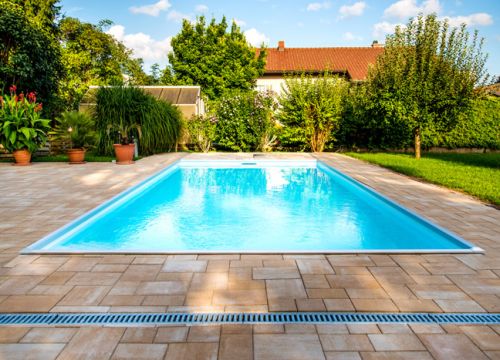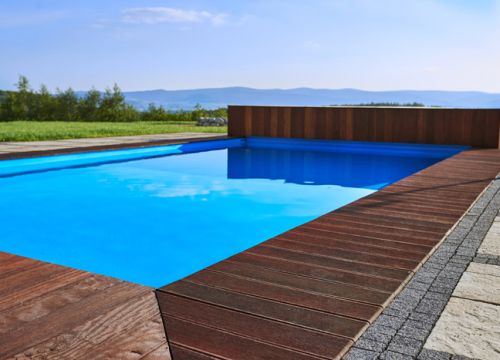TWO DISTINCT POOL SYSTEMS: SKIMMER AND OVERFLOW POOLS COMPARED FOR QUALITY AND MAINTENANCE

If you're having trouble deciding between a skimmer or an overflow pool, let's explore the features and differences of these two systems, so you can select the ideal pool for your needs.
To choose the perfect pool for your garden or interior, it's crucial to have a comprehensive understanding of the available models. When it comes to in-ground pools, there are two types to consider - skimmer and overflow pools.
Skimmer Pool
The skimmer pool, named after its skimmers or "collectors", consists of drainage holes located on the upper part of the pool walls. Water from the pool flows into the filtration system through these holes to remove impurities. The inlet nozzles, positioned about 35 cm from the water surface, return the filtered water back into the pool. This system does not require a balancing tank since it's a closed hydraulic circuit that pumps filtered water directly from the skimmers to the filtration system. The skimmer pool is popular in the private sector, offering a good price-to-quality ratio for construction and maintenance.
Advantages:
- Easy maintenance and cleaning
- Reliable and trouble-free operation
- Reasonable price
Disadvantages:
- Lower water level (10 - 15 cm) compared to the edge of the pool
- Reduced water circulation in the pool
Overflow Pool
The overflow pool features an overflow channel with a cover grid surrounding the entire perimeter, where water spills over spontaneously. The channel directs the water towards the balancing tank, situated between the pool and the filter system. Overflow pools provide optimal distribution and purification of filtered water. Dirt that collects on the water's surface flows evenly to the buffer tank via the overflow mechanism. Floor jets return the filtered water back into the pool, preventing the growth of algae. The overflow system ensures full immersion of the pool's inner wall, creating an aesthetically pleasing effect.
Some companies opt to create deeper overflow channels to reduce costs, but this solution isn't ideal. It leads to issues with circulation and water movement due to the inadequate capacity of the gutters. These gutters also collect dirt, making it challenging to clean the pool thoroughly.
The water level in an overflow pool is up to the upper edge, creating a seamless surface. It's a popular choice for indoor projects.
Advantages:
- Perfect aesthetic appeal
- Water level reaches the upper edge of the pool
- No waterline forms on the pool wall
- Efficient cleaning and better water circulation
- Collects floating debris more efficiently
Disadvantages:
- Requires more maintenance (outdoors)
- Higher price tag
Still uncertain which pool system to choose? Contact Diamant Unipool's sales network or send us a message, and we'll get back to you soon.



